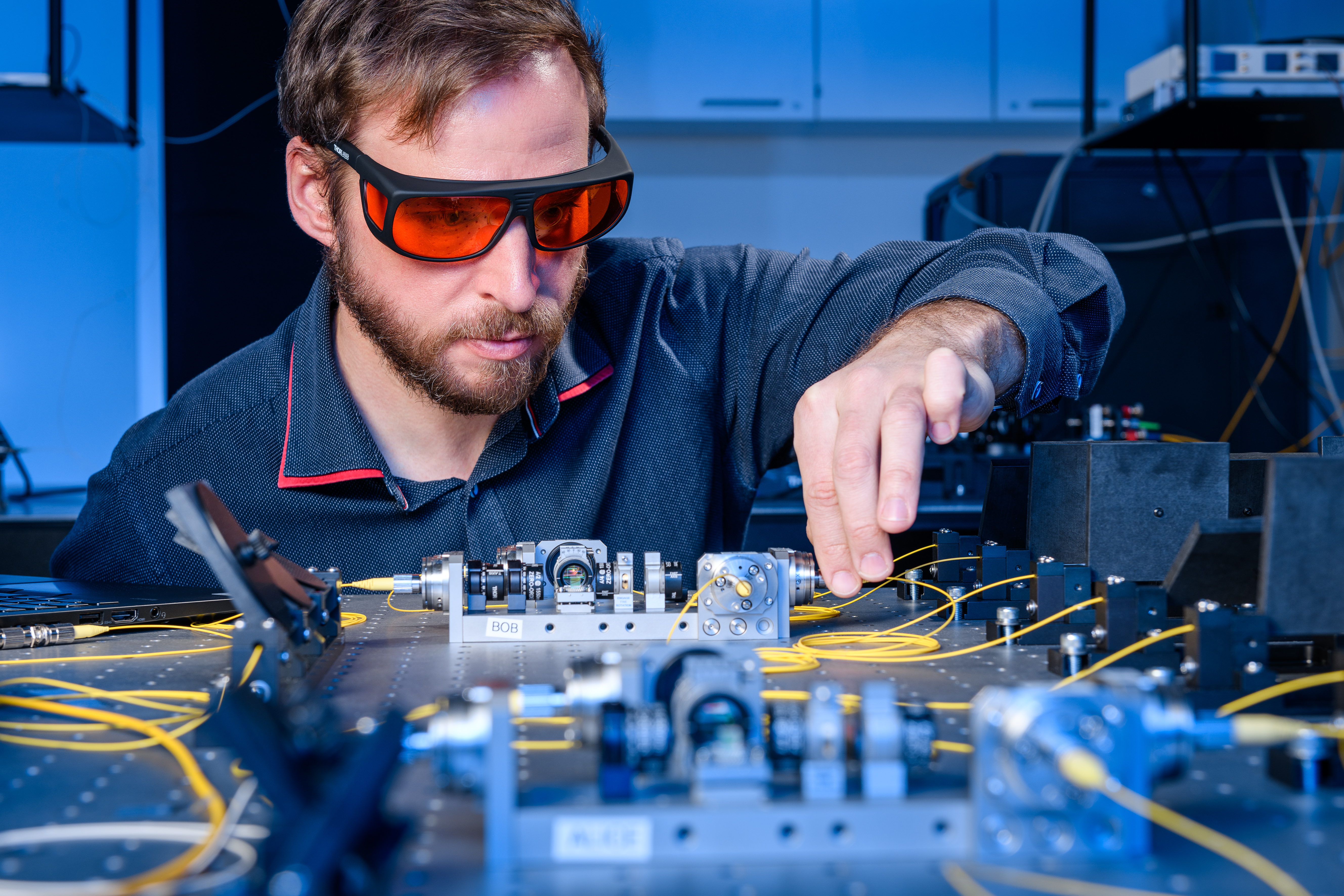Newsletter 02/2023
In addition to experimental environments and design services for the development of microelectronic components, the center offers companies and researchers a "test track" for quantum communication. The focus here is on modular microelectronic circuits for tap-proof data transmission.

More and more, the Quantum Communication Application Center at Fraunhofer IIS/EAS is becoming a central venue for the development of microelectronic components for this special field of application. Together with partners from the business community, the researchers are working to design components that are precisely tailored to this type of data transmission, to characterize and test them – either in an in-house test environment, or with the help of a test setup within Dresden. After all, making sure that the pioneering field of quantum communication can deliver data transmission capable of withstanding attacks from even the most powerful computers calls for special electronics.
“Research into developing and miniaturizing optical components for tomorrow’s quantum communication has been going on for years. Germany and Europe are making great strides in this area,” explains Johannes Verst, CEO of the Quantum Business Network (QBN), of which Fraunhofer IIS/EAS is a member. “But there’s still a lot of catching up to do, especially when it comes to designing secure miniaturized microelectronics for these solutions. So the services available at the application center are the ideal complement to our network’s portfolio as we strive to further enhance our community’s innovative prowess.”
Since not just the optics but also the electronics used in quantum communication are essential for developing attack-proof overall systems, the Fraunhofer IIS/EAS
Application Center has made it its mission to come up with a secure, modular design for these special microelectronics. The center’s researchers offer companies in this segment an extensive portfolio of services, ranging from joint development of electronic components and design services to secure implementation. For the latter, the center provides comprehensive electronic measurement equipment up to the Gigahertz range, which can also be used to characterize circuits.
Rounding out the portfolio of services are an in-house quantum communication test bed and an intraurban quantum communication demonstrator. Using individual polarization-entangled photons, it is possible to securely exchange quantum keys – either inside the institute building, or via a five-kilometer fiber-optic track leading to a second Fraunhofer institute in Dresden. The researchers’ medium-term goal is to work with optics experts based in Jena to achieve quantum key exchange via so-called trusted nodes over the roughly 220-kilometer distance between the two cities. The aim of all test activities is to put the communication connections into practice in order to define the additionally required specifications for miniaturized electronic components. These results are then fed back into the development work carried out at the Application Center Quantum Communication and into the QBN with a view to preparing the German and European economy for this promising application area.
The expansion of the Application Center Quantum Communication has received funding from the European Regional Development Fund (ERDF) and from the state budget passed by the Saxon state parliament, reference numbers 100498890, 100498868 and 4-7324/27/3-2022/32856.
 Fraunhofer Institute for Integrated Circuits IIS, Division Engineering of Adaptive Systems
Fraunhofer Institute for Integrated Circuits IIS, Division Engineering of Adaptive Systems